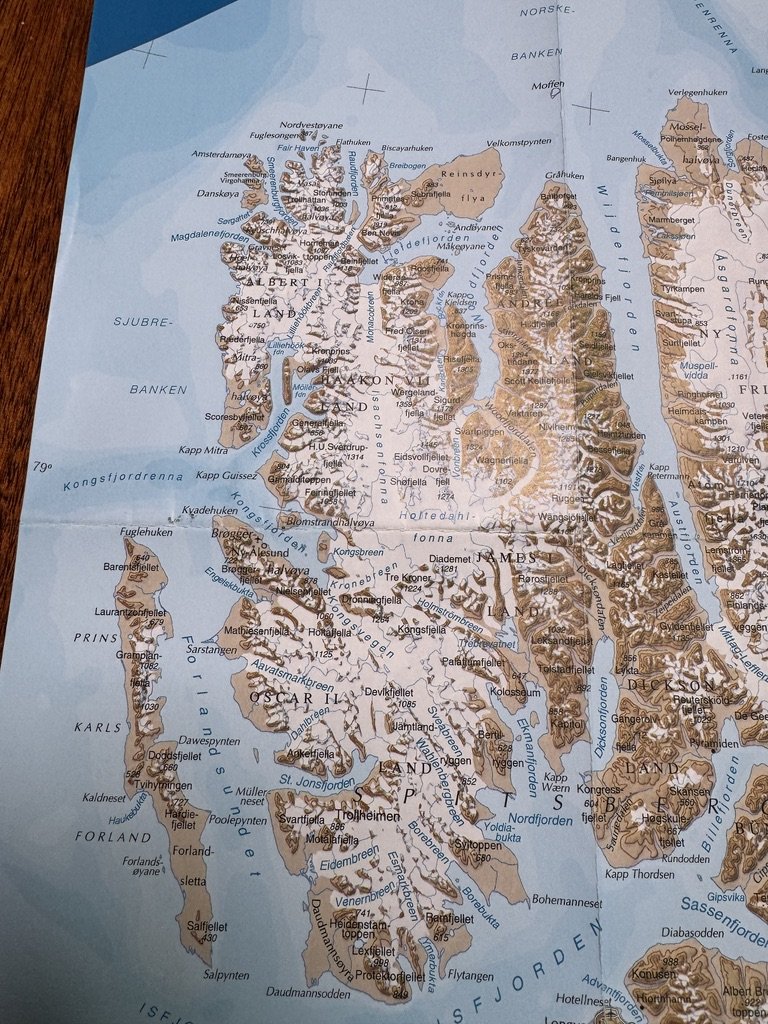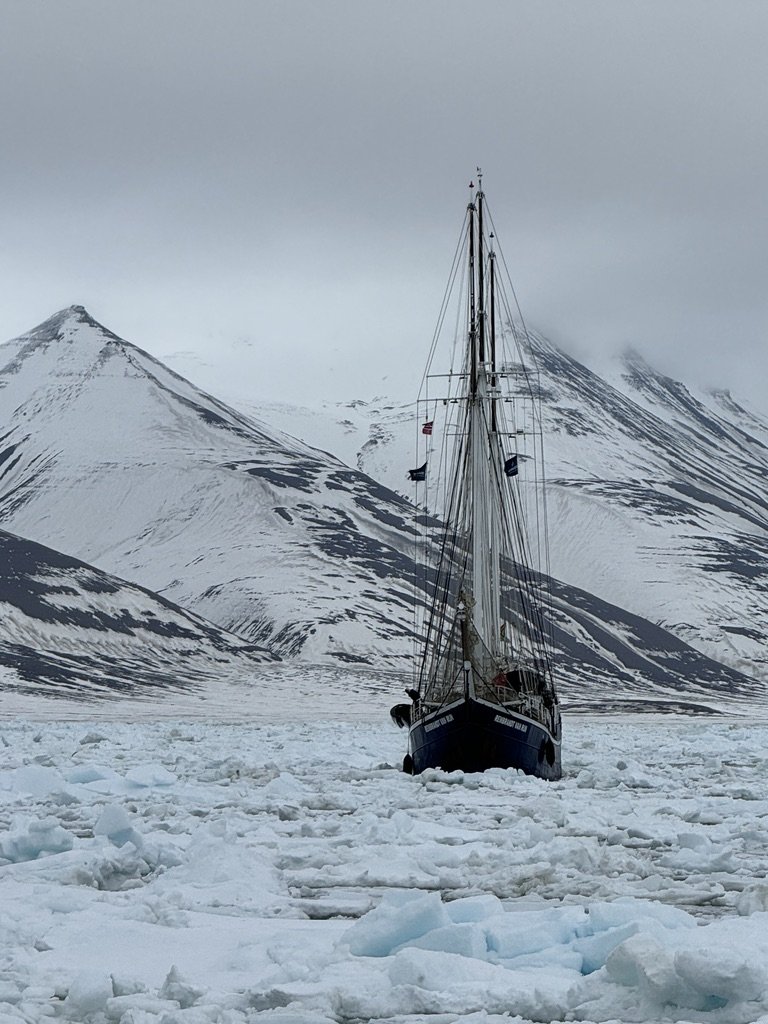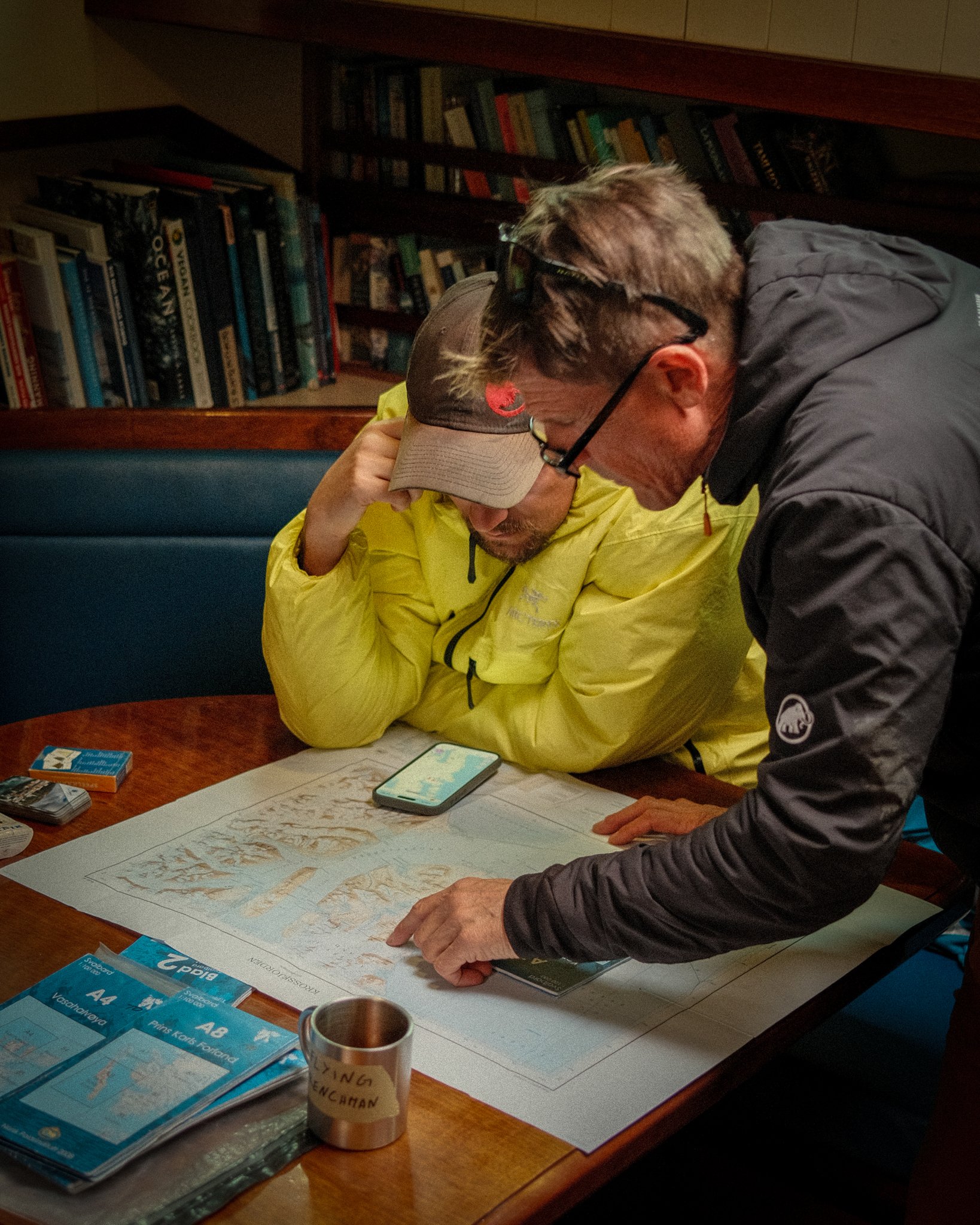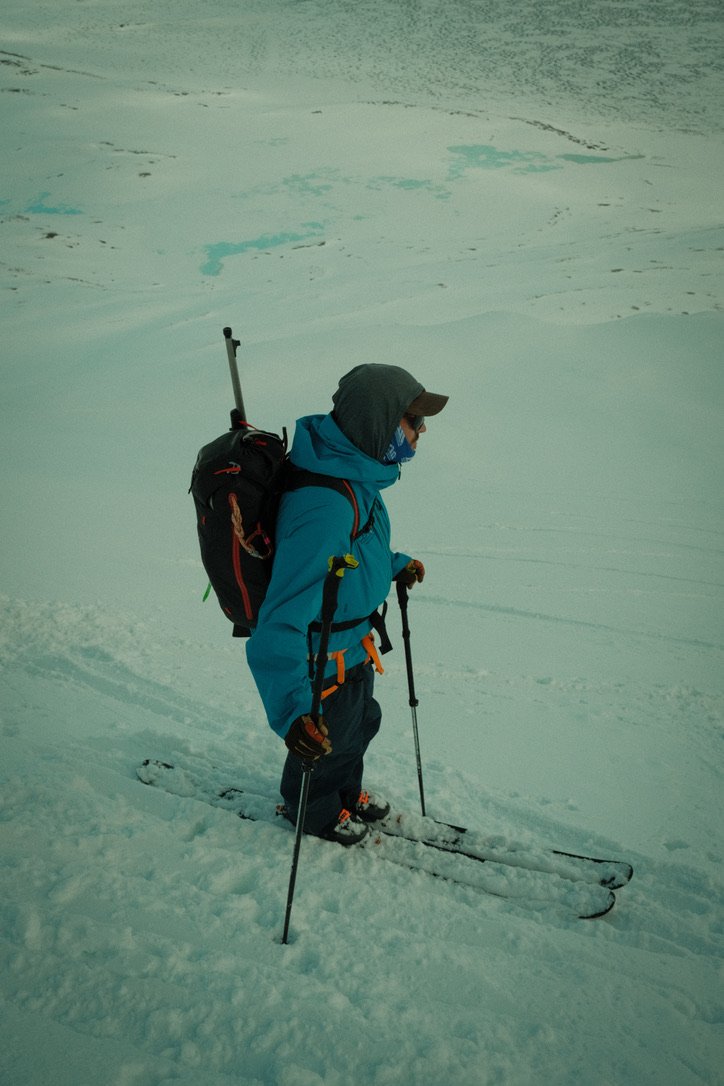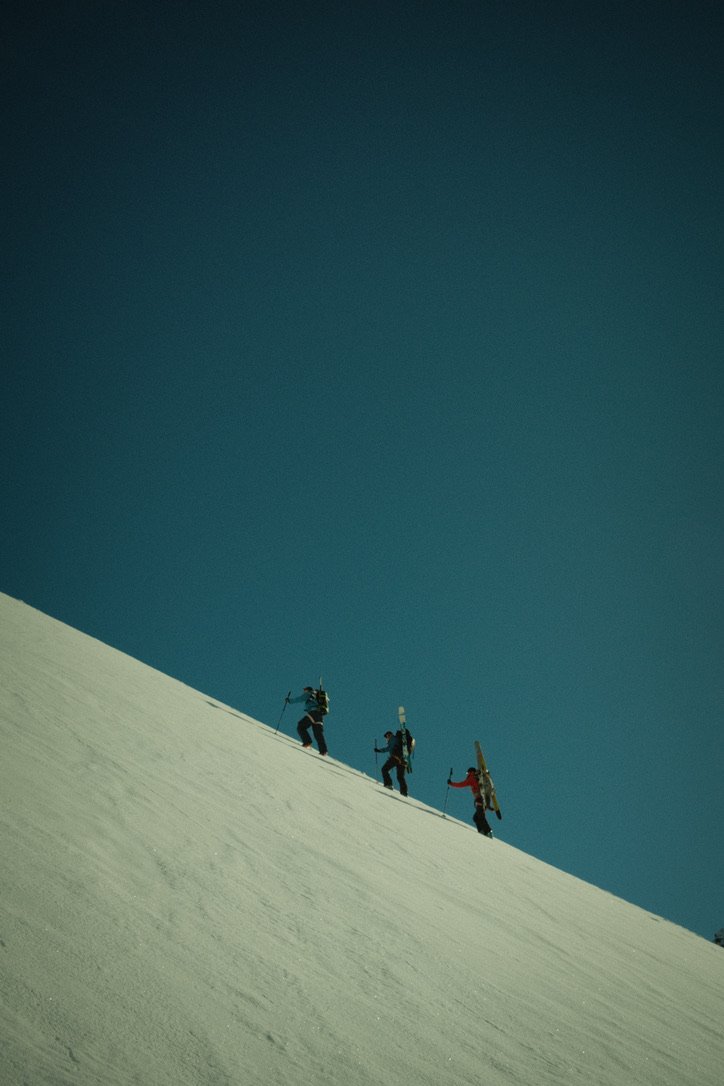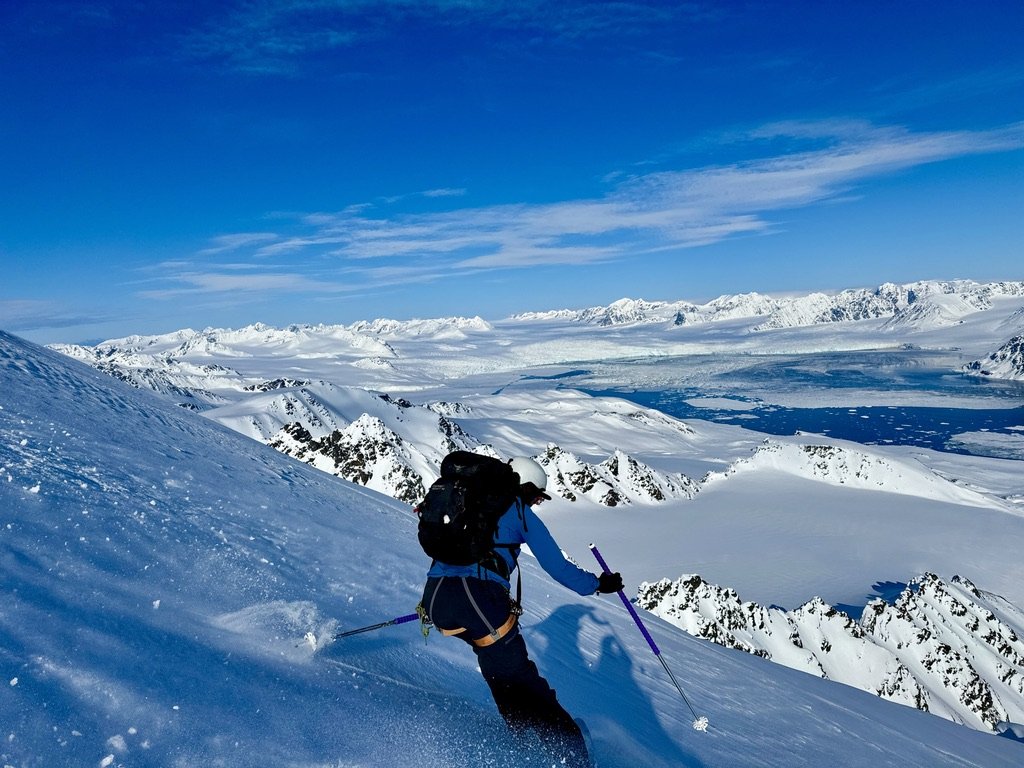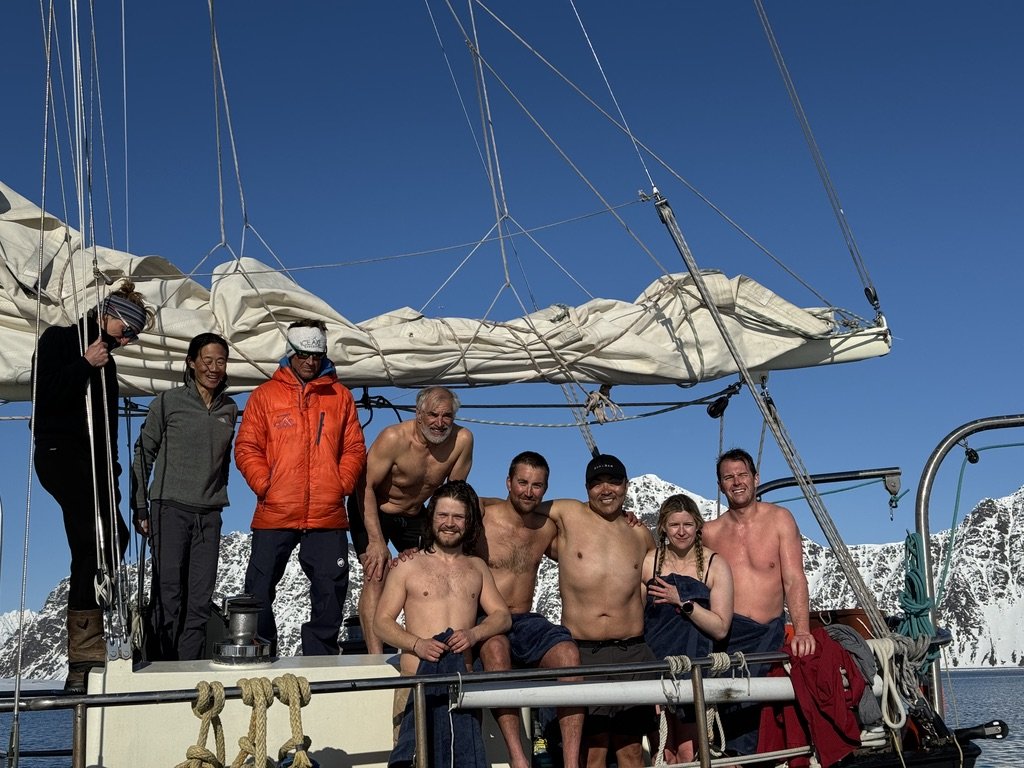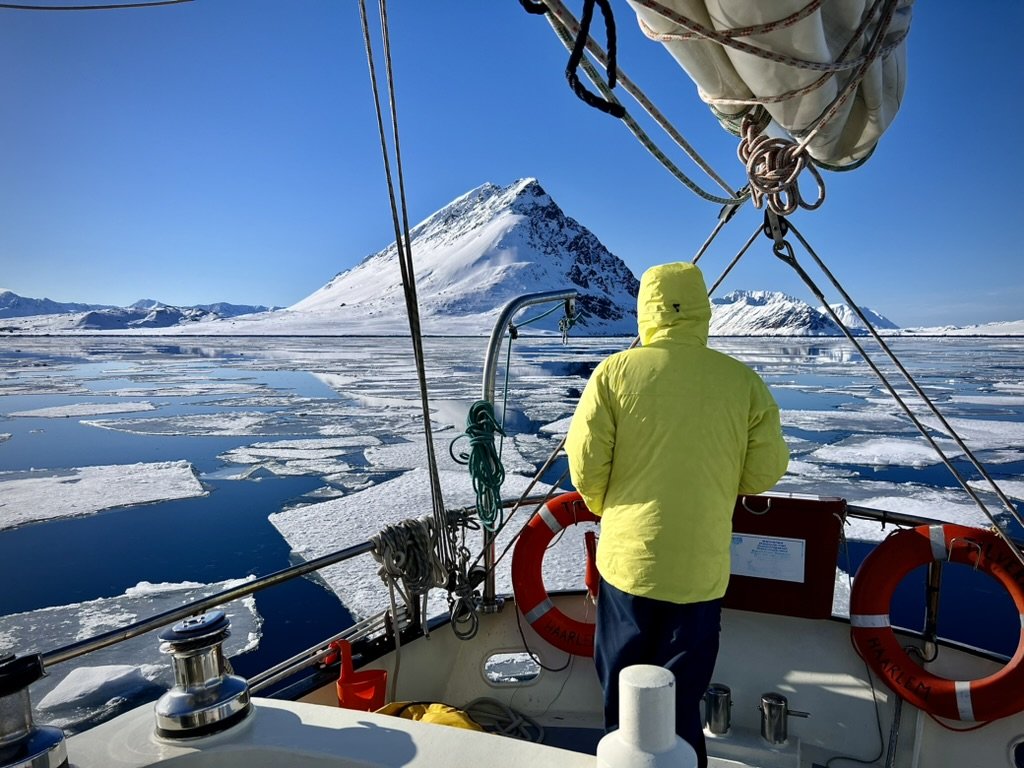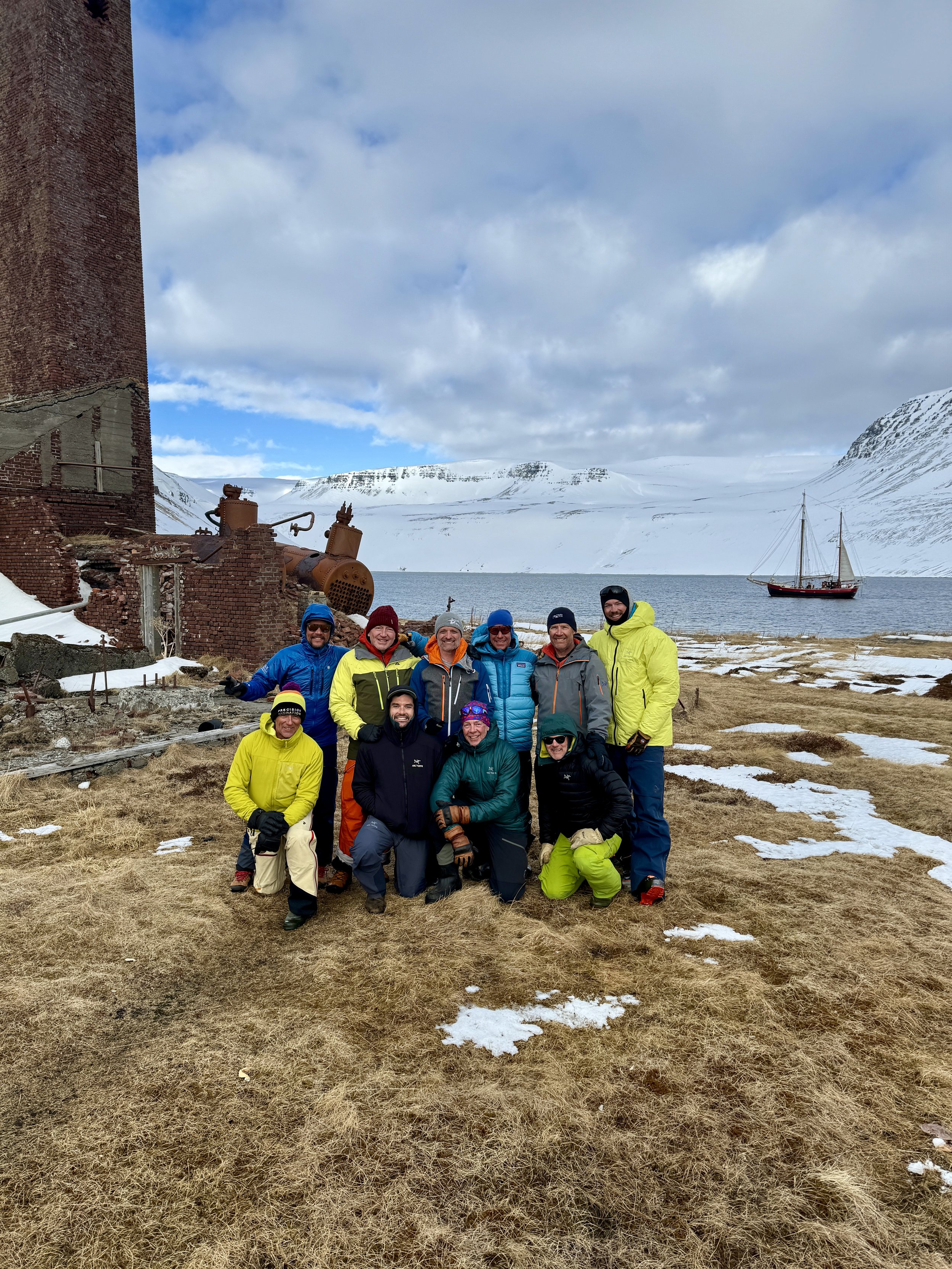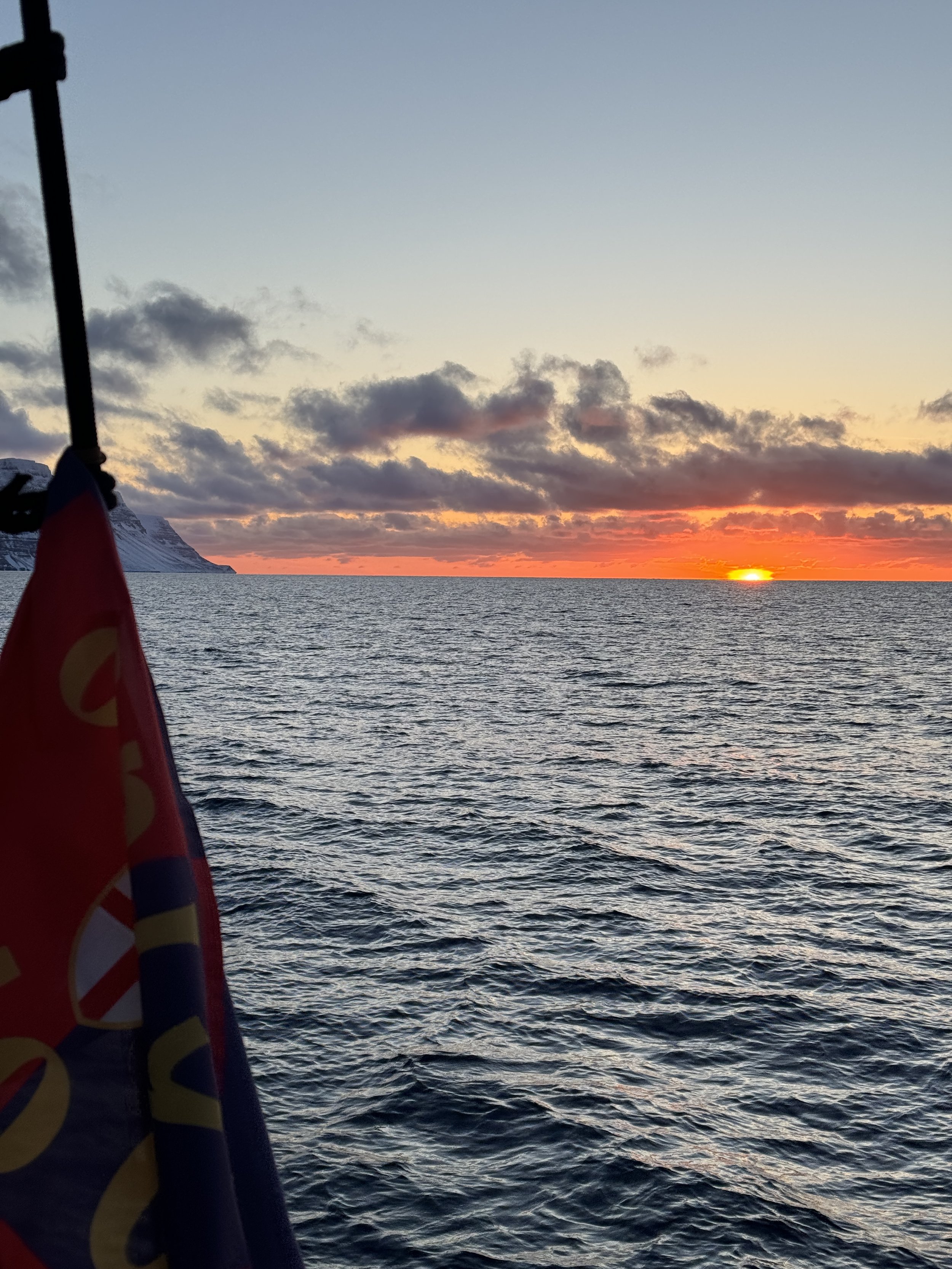Svalbard
It has been many months since I had the incredible opportunity to ski in Svalbard. Typically, I find it essential to write about such experiences right after they happen, while the memories are still vivid. But life has a way of intervening. More trips unfolded, and while the details may have faded, the essence of that adventure lingers, waiting to be expressed.
Skiing in Svalbard is not merely a novelty; it has become a sought-after experience for many adventurers. Guides and their clients have long ventured to the far reaches of the north, drawn by the promise of untouched skiing and breathtaking views. The terrain is primarily accessed by boat or ship, creating a perfect synergy between skiing and sailing. This combination has gained popularity, and for those who haven’t experienced it yet, I can only say you’re missing out.
Svalbard feels almost mythical. For those unfamiliar, it lies far above the Arctic Circle, beyond Norway and its neighboring countries, specifically between 71 and 80 degrees north latitude. The islands hold a rich history; in the early 17th and 18th centuries, they served as a base for many whalers. By the 20th century, coal mining began to shape the area, and in the 1920s, a treaty established that Svalbard would be governed by Norwegian sovereignty. Today, tourism and research have emerged as significant industries.
Sixty percent of the islands are covered in glaciers, yet the highest peaks only reach about 5,500 feet. The midnight sun in summer and the endless darkness of winter do not seem to deter the bustling town of Longyearbyen, home to nearly 2,000 residents—primarily coal miners, scientists, and seamen.
My journey began in Oslo, Norway, where I caught a 3.5-hour flight to Longyearbyen. Accommodation options were limited, but each place had its own charm. On a trip with Ice Axe Expeditions, I met the guests who would accompany us. Everyone was eager to connect, despite the heavy jet lag and the sun that refused to set. We tried to shake off the fatigue through naps, drinks, and exploration, but little could dispel the weariness.
Once all our guests and guides had arrived, it was time to prepare and meet the boat captain, Heimir, to inspect the vessel that would take us to the stunning skiing terrain. Her name was Tilvera—a beautiful ship with a steel hull measuring 22 meters in length. With a breadth of 5.5 meters and a draft of 2.8 meters, she was perfectly suited for our upcoming adventure, boasting eight comfortable cabins.
Heimir, our captain, hailed from Iceland. If you were to Google "images of Icelandic Vikings," I believe he would be among the first to appear. He embodied the modern-day Icelandic Viking sailor, having spent over 20 years as a captain on various vessels before taking ownership of the Tilvera.
As we discussed our plans with Heimir and the crew, a concerning issue arose: the sea ice. I had arrived a day early and was shocked to see Longyearbyen’s bay packed with ice. How could ships navigate through this? Unsure of the nautical possibilities, I texted Todd, my co-guide, on WhatsApp, asking if this was normal. For me, it was my first trip; for Todd, it was likely his fifteenth or more.
Back on the Tilvera, Heimir addressed our concerns about departing the port amidst the sea ice. The towering Viking calmly reassured us, "Yes, this should be fine—it might make things slow." Slow was acceptable; it was certainly better than being told, "No, we are not leaving."
We finalized the logistics and began loading the ship the next day with gear, skis, and, yes, firearms. This ski trip required not only skis but also guns, as Svalbard is home to around 3,000 polar bears—more than the total number of human inhabitants on the islands. The Norwegian government mandates that all guides conducting land excursions carry a rifle and a flare gun. After all, clients tend not to tip their guides if they end up getting mauled by a polar bear—who knew?
As the engines of the sailboat roared to life, the crew untied from the port, and we set off. The excitement of leaving port and heading into the unknown was overwhelming. The sounds of booms and crashes accompanied us as we slowly pushed through the sea ice. Most of us, lacking significant sea ice navigation training, felt a mix of concern and exhilaration—not to the level of "Are we going to die?" but more like, "Are we going to get out of here and be able to go skiing?" Moving at just 1-2 knots while navigating the massive ice labyrinth was thrilling, yet it felt like a lot of work. Two deckhands took positions on each side of the bow, guiding Heimir as he skillfully maneuvered through the ice.
After what felt like hours of navigating the dense sea ice, the Tilvera finally broke free into open water. The crew cheered, and the atmosphere shifted from anxious anticipation to palpable excitement. The vast expanse of the Arctic Ocean stretched before us, shimmering under the low-hanging sun. As we sailed further away from Longyearbyen, the rugged beauty of Svalbard revealed itself—towering glaciers and snow-capped peaks surrounded us, creating a breathtaking backdrop for our adventure.
The following morning, after a hearty breakfast, we donned our ski gear and prepared for our first descent. We briefed our guests on safety protocols, emphasizing the importance of staying close together and keeping an eye out for wildlife. With our rifles slung over our shoulders, we stepped off the boat and onto the crisp, untouched snow. The thrill of skiing in such a remote and beautiful location was exhilarating.
As I made my first turns down the slope, a rush of freedom surged through me. The snow was perfect—soft and powdery, allowing for smooth glides and effortless turns. I paused to take in the view, the vastness of the landscape stretching out before me, and I couldn’t help but smile. This was what I had come for.
Throughout the week, we explored various terrains, each day bringing new challenges and breathtaking sights. One afternoon, while skiing near a glacier, we spotted a group of walrus’s lounging on the ice. But the true highlight came when we encountered a chance to jump into the polar water. It was a surreal and COLD moment.
The sun dipped below the horizon, casting a golden glow over the icy landscape. I found a quiet spot on the deck of the Tilvera. I reflected on the journey that had brought me here—the unexpected challenges, the breathtaking beauty, and the incredible people I had met along the way.
Svalbard had not only fulfilled my desire for adventure but had also provided a deeper connection to nature and to those around me. I felt grateful for the opportunity to experience such a unique part of the world, and I knew that this trip would leave a lasting imprint on my heart.
As our expedition came to an end, we sailed back to Longyearbyen, the memories of our adventures still fresh in our minds. The sea ice that had once seemed daunting now felt like a symbol of our resilience and determination.
Upon returning to the bustling town, I realized that this journey was more than just a ski trip; it was a transformative experience that had awakened my spirit of adventure. As I boarded my flight back to Oslo, I carried with me not only the stories of Svalbard but also a renewed sense of purpose and a longing for future adventures.
Svalbard had captured my heart, and I knew I would return. The allure of its untouched landscapes and the thrill of exploration were too powerful to resist. As I looked out the window during my flight, I promised myself that this was just the beginning and I hope to be back.
Iceland ski & sail
It all begins with an idea.
Never in a million years would I have thought my ski guiding career would have brought me to buckling my boots on the deck of a sailboat. Now I have found myself skiing in the Land of Fire & Ice: Iceland.
In 2024, a time with advanced technologies and a fast paced lifestyle, it's nice to be able to say that we can still enjoy the pleasant aspects of the old world: the sailboat. Built in 1993, this expedition charter sailboat was crafted in the Netherlands for voyages in the Arctic, and stretches out to a length of 25 meters. Its name is Byr, the Icelandic word for the phrase “wind in your sails”. I find it to be an expression of good luck. The Byr is fitted with a main sail, mizzen sail, foresail, two jibs and a topsail. A weapon for the arctic. Byr not only boasts high efficiency for use of the wind, but she does it with comfort. There are 12 bunks aboard the ship, 2 shared bathrooms, and the luxury of a shower. Though, it is hard to imagine that there were entire centuries of humans looking to adventure and travel the world in these boats - inevitably spending years on them - the Byr is made for exploring the North with comfort and efficiency in mind.
Boarding the Byr
However, a ship is only a ship, but a ship with its crew? That's something different. After an adventure is done and I disembark a ship, which I've done a fair amount now, the ship is memorable, but I always remember its crew. The crew is mastered by an Icelandic-Finnish family: Sigurdur “Siggi” & Annukka. Siggi - a ship builder, explorer, and one of the original captains to start skiing and exploration in the Northwest Fjords of Iceland - is a multi-generational inhabitant of Isafjordur. Isafjordur is a northern town which we found ourselves in starting this epic trip. And Annukka (Siggi’s partner) - a well accomplished sailor with a marine biology and environment background - originally hailing from Finland, and who seems to be at home on the water. Siggi and Annuka also share their experience, love for the ocean, and their passion for mastering the Byr with their two children. The whole family is leading the sailboat and our trip throughout the north western Fjords. It is incredible to experience them taking amazing care of us, and their children - who are turning out to be even more seaworthy then me or anyone else on the ship. It is truly a beautiful sight.
When it comes to ski guiding off of a sailboat, the skiing part ends up being only a portion of the overall experience. However, what I am certain of, is ski guiding for Ice Axe Expeditions is a dream come true - no company do I have a greater pride and honor working for. So when I got the call to work with Andrew E. and 8 guests I did not hesitate to make it work with my already very busy ski guide season. So off to Iceland I went!
The terrain
I hopped onto a plane from Anchorage, Alaska and 4 planes later, me and Andrew arrived in Isfjord, Iceland. The town name is Icelandic for “Ice Fjord” or “Fjord of Ices”. Isfjord has a population of about 2,600, the largest in the peninsula of Vestfioir, and has history as far back as the 9th century (interestingly, Isfjord became a town with municipal status in 1786 and my home state of Alaska didn't even become a state until 1959…). Isfjord is a small fishing town with a little bit of tourism that is attached to Hornstrandir, Iceland's northernmost peninsula which is where we do all of the skiing. The area of Hornstrandir is roughly 220 square miles and it is a protected nature reserve.
So now we have the vessel and the starting destination but what about the skiing part of the skiing trip, right? How was the snow? What was the vertical?
The Byr
This is my first time skiing in Hornstrandir. Andrew has been here before, which was nice, and he refers to it as “plug and play” - a common guide term meaning the experience is fairly straightforward and there are not a lot of complexities to the terrain or objectives in the area. Regardless of the complexities (or lack thereof), I find myself guiding in places that I have never been to before. In the industry we call this “on-sight guiding”, which describes itself exactly. At this moment, I rely on my previous training and past experiences/skills to manage this new and interesting terrain - and the terrain is a dream: epic faces, couloirs, and steep slopes with incredible top out peaks, like the deserts in the states. The terrain is covered in ice and snow - a skier's dream. So far we have seen perfect slopes, no vegetation, and not many large hazards (no crevasses or glaciated terrain). These features also mean less gear for us guides and the guests.
I have heard from the locals that this April is a little different than most. We arrived in what felt like a full winter. The spring that many talked about had not arrived yet to the northwest of Iceland, nevertheless we kept up our optimism as we first set sail across to Hornstrandir from Isfjord.
Ski & Sail
Oftentimes ski expeditions run the risk of not getting the best snow conditions, and a “Hit or Miss'' mindset kicks in. We all know you can have blower powder and epic corn every time you head out, but it's just not always a reality. However, we have been scoring. Skiing in the West Fjords has been epic and we managed to find some great snow, playing the right aspects with the weather and finding what softened up - and with that pure bliss.
In the days we have been out here, we have been lucky enough to ski tours for long days with incredible views and great descents. Also, we have not seen a single soul (besides our crew) out here. It keeps blowing my mind that we are experiencing maybe some of the best skiing Iceland had to offer, and there wasn't another skier, sailor, or human in sight.
Our playground
And, picking where to ski has been pretty easy. In addition, our captain Siggi is not only the best sailor but also a born skier. Skiing from when he could first remember. So this has been the icing on the cake as far as planning. When you have your naval navigation with a skier mindset it can be challenging - this hasn’t been the case. While we have been out here, we have found ourselves doing “Up and Overs”, which is when we start in one bay, ski tour to the highest peaks, and then ski back down into a completely different but adjacent bay. Our home base, our aquatic lodge, moves while we are skiing so that we end in a new zone to us.
The Team & Byr
I want to reflect that there are some amazing feelings you can get when you are in the mountains or skiing. We all remember our deepest powder day, our best ski day, and the one day we skied perfect corn with a good friend. In Iceland, skiing off of a sailboat, I have been introduced to an amazing new feeling: skiing perfect soft snow down to the beach, with a sky so blue that it looks like something out of a comic, and a sailboat just anchored a few 100 yards away.
A perfect ski trip


